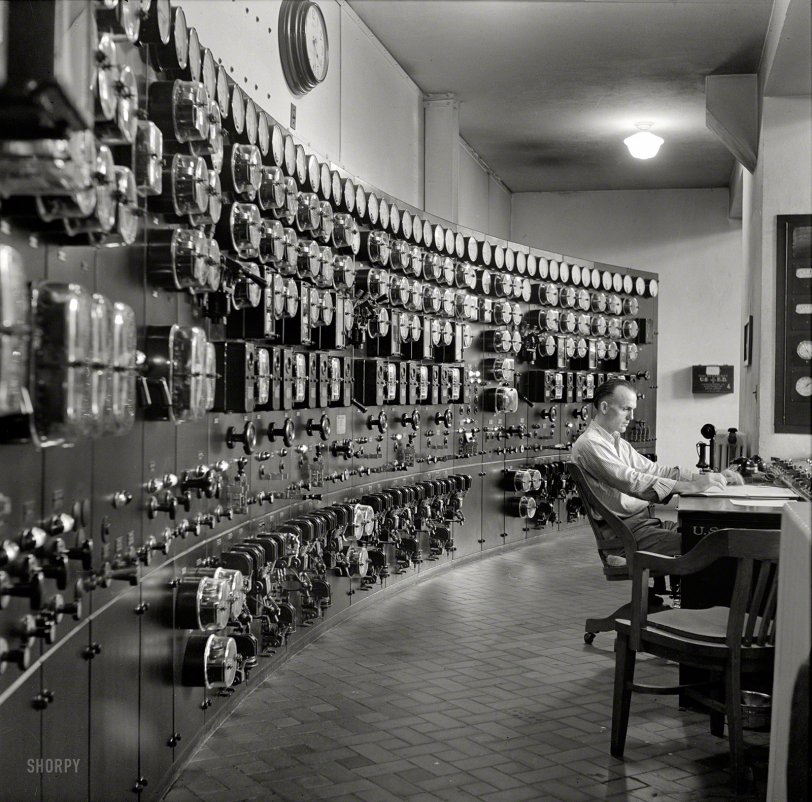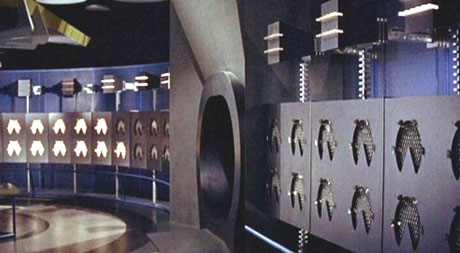


Framed or unframed, desk size to sofa size, printed by us in Arizona and Alabama since 2007. Explore now.
Shorpy is funded by you. Patreon contributors get an ad-free experience.
Learn more.

- Baldwin 62303
- Baldwin VO-1000
- Cold
- No expense spared
- Tough Guys
- Lost in Toyland
- And without gloves
- If I were a blindfolded time traveler
- Smoke Consumer Also Cooks
- Oh that stove!
- Possibly still there?
- What?!?
- $100 Reward
- Freeze Frame
- Texas Flyer wanted
- Just a Year Too Soon
- WWII -- Replacing men with women at the railroad crossing.
- Yes, Icing
- You kids drive me nuts!
- NOT An Easy Job
- I wonder
- Just add window boxes
- Icing Platform?
- Indiana Harbor Belt abides
- Freezing haze
- Corrections (for those who care)
- C&NW at Nelson
- Fallen Flags
- A dangerous job made worse
- Water Stop
Print Emporium
Flow Master: 1940

September 1940. "Control room, waterworks. Conduit Road, Washington, D.C." Photo by Edwin Rosskam, Office of War Information. View full size.
Time current
lectrogeek is correct; those are protective relays for medium voltage circuit breakers. Large motors in waterworks typically are 4160 volt or sometimes 7500 volts. All those relays had to be calibrated usually once a year by a technician with an ohmmeter and a spring calibration tool. Now you plug a laptop in and set the parameters and logic with your keyboard. Up until recently most utilities did not trust the newer electronic relays and still used the older electro mechanical types.
Dr. Morbius I presume?
Reminds me a bit of the Krell power station from Forbidden Planet.

Powerful
That's a big waterworks for its time, because I thought I was looking at a power plant switchboard. The devices with glass globes secured by wingnuts look like watthour meters, but actually they are protective relays. The reason for the resemblance is that they work on the same principal: the calculation of the phase angle between two magnetic fields, that of the voltage and the current, using a rotating disk propelled by induction. Since the functions are similar, manufacturers General Electric and Westinghouse pulled parts for both types of devices from a common bin.
A protective relay detects abnormal conditions on the line, and sends a signal to open a breaker. There are a few dozen different relays for different functions, which is probably why we see so many here. Nowadays, one digital relay can serve multiple functions.
The appearance of this board tells me this plant probably used high voltage, or maybe even had its own power plant on site.
























On Shorpy:
Today’s Top 5